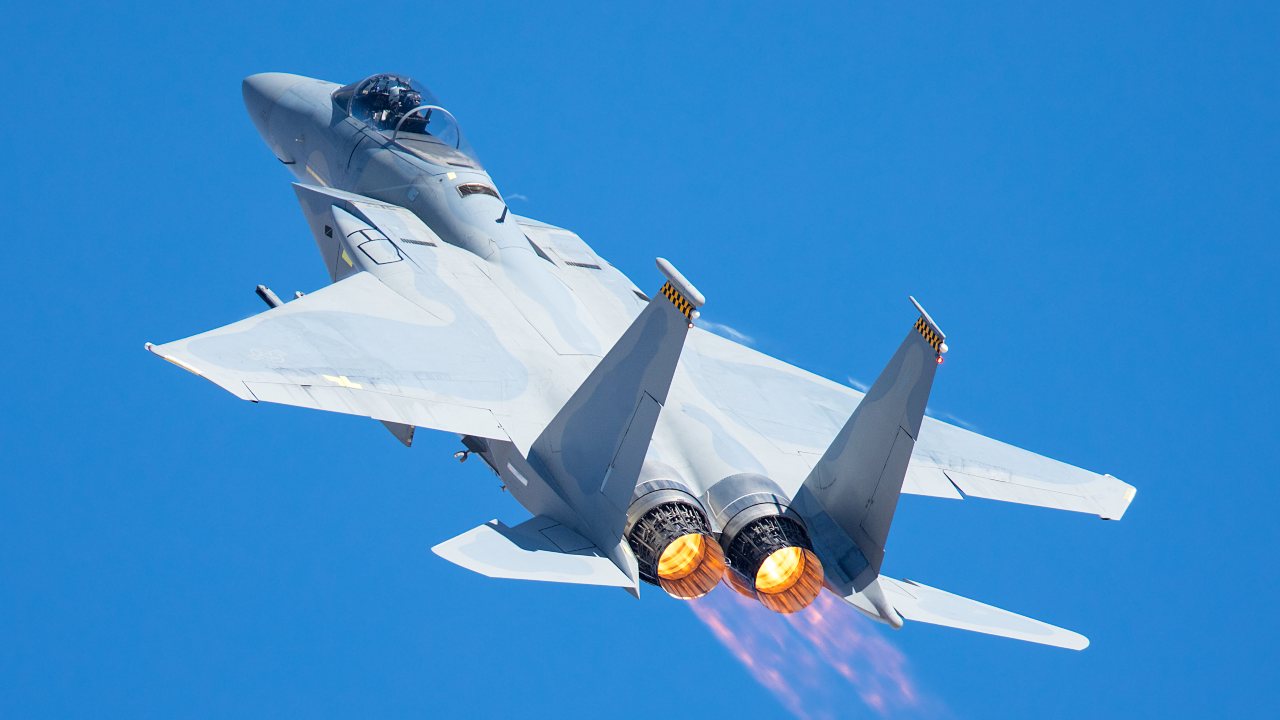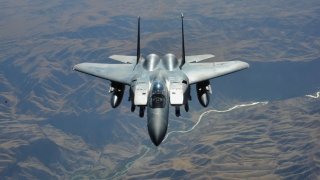The U.S. Air Force's F-15 Fighter Explained In 2 Words
The F-15 Eagle, a fourth-generation fighter first introduced in the 1970s, has been America’s premier air superiority jet, securing 34 of the USAF's 37 kills over the past four decades. With a speed of Mach 2.5, a range of up to 3,450 miles with external tanks, and versatile weaponry, the F-15 has shown resilience despite age.
Totally Obsolete?: The F-15 Eagle, a fourth-generation fighter first introduced in the 1970s, has been America’s premier air superiority jet, securing 34 of the USAF's 37 kills over the past four decades. With a speed of Mach 2.5, a range of up to 3,450 miles with external tanks, and versatile weaponry, the F-15 has shown resilience despite age.

-Originally meant for retirement, Congress now mandates its continued use through the F-15EX Eagle II, designed as a "fourth-generation plus" model to address cost concerns and capability gaps.
-Yet, critics argue it's time to transition fully to fifth-generation platforms like the F-22 and F-35.
From Eagle to Eagle II: Can the F-15 Keep Up in Modern Warfare?
For 40 years, the world’s premier fourth-generation supersonic air superiority fighter has been the F-15 Eagle. First having flown in 1972, the F-15 has seen multiple iterations of its model and serves in countless militaries around the world. The F-15 was designed to overcome what had become advanced Soviet air defenses. These birds had far greater maneuverability, speed, range, avionics, and weapons systems than what had preceded it in the third-generation warplane (think the F-4 Phantom).
Over the last 40 years, of the United States Air Force’s 37 kills, the F-15 has been responsible for 34 of them. These planes, thanks to their electronic countermeasures, speed, and maneuverability, are extremely hard to kill—despite the fact that there are today far more advanced, fifth-generation warplanes flying the unfriendly skies.
The F-15 Specs
Originally produced by McDonnell-Douglas, the legendary warplane is today built by Boeing. Depending on the variant, two Pratt & Whitney F-100-PW-220 turbofan engines, producing a thrust of 23,450 pounds, or two Pratt & Whitney F100-PW-229 turbofan engines with afterburners, producing 29,000 pounds of thrust power these fighter jets.

The F-15 can reach a speed of Mach 2.5 and has a range of 2,878 miles. This range can, of course, be drastically extended with the assistance of mid-air refueling tankers. An F-15 can be outfitted with three external tanks, meaning that its range can be boosted to 3,450 miles. These birds have a ceiling of 60,000 feet.
In terms of armaments, the F-15 is truly lethal (there’s a reason these birds account for 34 out of 37 of the Air Force’s kills over the last 40 years). There is an internally mounted M61A1 20 mm six-barrel cannon. Four AIM-9 sidewinder missiles with an additional four AIM-120 AMRAAM’s can be placed on this fighter. The F-15 can even fire an anti-satellite weapon that will destroy targets in low-Earth orbit.
The Purpose of the F-15
These planes were supposed to be retired and replaced by the fifth-generation warplanes that have been flying for the last 30 years. Due to budgetary concerns and, in the case of the F-22A Raptor, manufacturing issues, the military has had to rely on the F-15 far longer than it had planned. Things have gotten so bad with replacing the F-15 with the costly and complex fifth-generation warplanes that Congress won’t let the Air Force retire its F-15 fleet as the USAF had originally planned.
What’s more, an entirely new variant of the F-15 has been ordered and built—the F-15EX Eagle II. This plane is considered a “fourth-generation plus” bird. Although less capable than the F-35 Lighting II or the F-22A Raptor, the US government has opted to build these systems. The F-15EX Eagle II is essentially a fast missiletruck. As for whether these birds can truly dance with a fifth-generation warplane, that is a matter up for intense debate among aviation circles. Oddly, the reason for Congress pushing for the creation of a new variant of the F-15 was to keep costs down while preventing critical strategic gaps from forming in tour Air Force.

Yet, the F-15EX Eagle II is onerously expensive. And it is not as advanced as either the F-35 or F-22.
Therefore, the F-15 is past its expiration date.
The US should not be wasting anymore time or money on these birds. Instead, the military should be working hard to restore the F-22 production line while ensuring that the F-35 can fly safely and reliably. The F-15 has had a great run. But time is passing these birds down. They might be helpful in certain situations, but generally speaking, America must move on from them now.
Author Experience and Expertise: Brandon J. Weichert
Brandon J. Weichert, a National Interest national security analyst, is a former Congressional staffer and geopolitical analyst who is a contributor at The Washington Times, the Asia Times, and The-Pipeline. He is the author of Winning Space: How America Remains a Superpower, Biohacked: China’s Race to Control Life, and The Shadow War: Iran’s Quest for Supremacy. His next book, A Disaster of Our Own Making: How the West Lost Ukraine, is due October 22 from Encounter Books. Weichert can be followed via Twitter @WeTheBrandon.
All images are Creative Commons or Shutterstock.
From the Vault
Russia Freaked Out: Why the U.S. Navy 'Unretired' the Iowa-Class Battleships
Battleship vs. Battlecruiser: Iowa-Class vs. Russia's Kirov-Class (Who Wins?)


